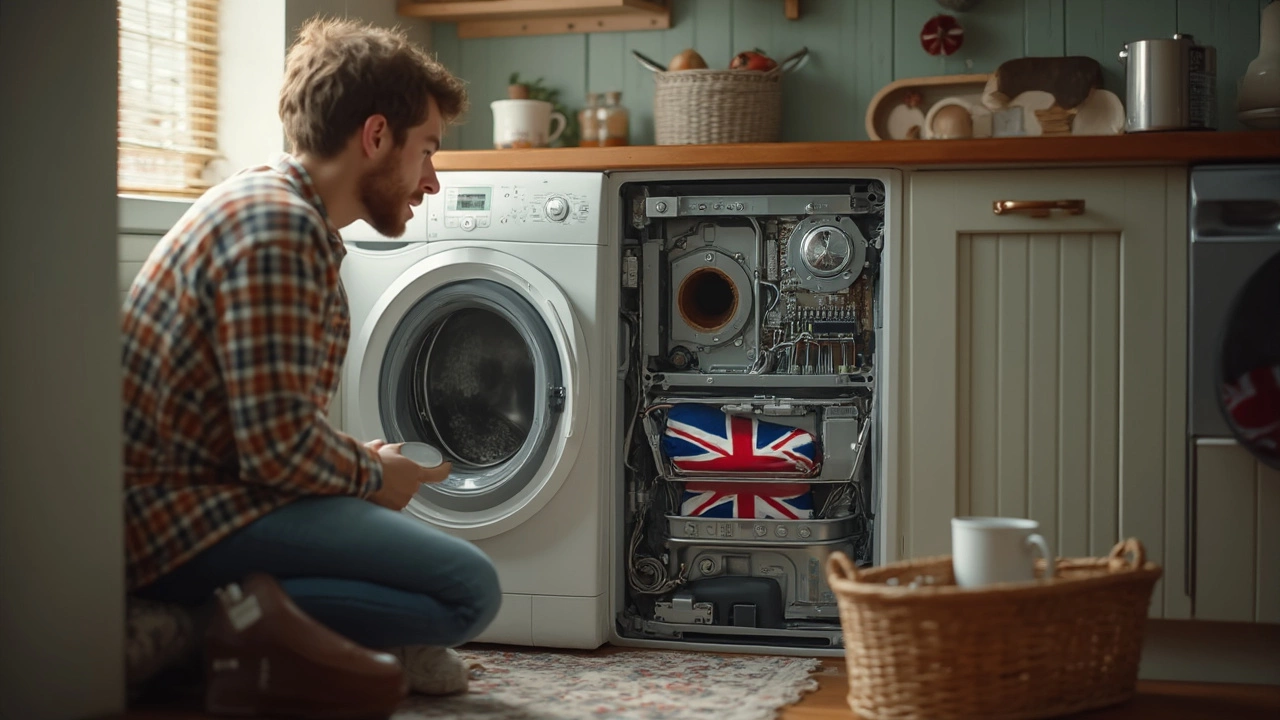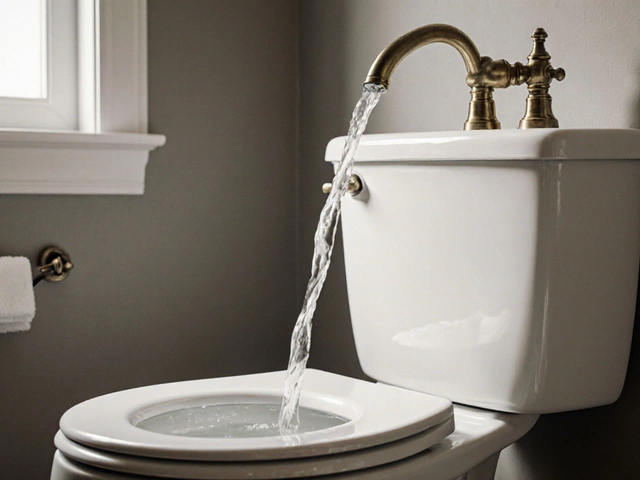Think your washing machine is on its last spin cycle? Before you shell out a fortune, you should know what really costs the most to replace. Everyone expects a fix to be a simple job, but if you hear from a repair tech that the drum or the control board is dead, brace yourself. These two parts squeeze your wallet the hardest – and for good reason.
So how bad can it get? If you need a new drum (that’s the big metal tub that actually spins your clothes), you could be looking at a parts-and-labor bill anywhere from $400 to $800. The control board, which is like the brain of the washer, isn’t far behind – sometimes landing in the $300 to $600 range, especially for washers loaded with fancy electronic features. Suddenly, that small leak or weird noise doesn’t seem so small, does it?
It’s easy to miss the warning signs. Maybe your washer starts making a horrible banging sound, or it won’t change cycles. Don’t wait until it grinds to a halt—pay close attention, because early intervention can sometimes save you the cost of the most expensive fix. Sometimes it’s a simple belt or sensor, but sometimes you’re staring at the worst-case scenario.
- Which Washing Machine Part Is the Priciest?
- Why Do Drums and Control Boards Cost So Much?
- Repair, Replace, or Upgrade?
- Smart Tips to Lower Your Repair Bill
Which Washing Machine Part Is the Priciest?
When your washer acts up, there’s always that sinking feeling: “How big is this going to get?” Out of all the things that can break inside a machine, two stand out for absolutely crushing your repair budget—the drum and the control board. For most folks, it’s the drum that wins the title for the most wallet-draining fix.
The drum is that big metal tub that spins your clothes. It’s heavy, tricky to get to, and usually not a DIY project. On top of the part itself costing a ton, the labor can be brutal because you basically have to tear the washer apart to swap one in. And newer washers with fancy stainless steel drums? Those can get even pricier. Take a look:
| Part | Typical Replacement Cost (Parts + Labor) |
|---|---|
| Drum | $400–$800 |
| Control Board | $300–$600 |
| Motor | $250–$500 |
| Transmission | $300–$450 |
According to HomeAdvisor, "Replacing a drum is almost always the most expensive repair on any washing machine, often costing more than half of what a new unit would cost."
“Think twice before replacing a washer drum—unless your machine is top of the line, it’s usually cheaper to buy a new one.” — HomeAdvisor Repair Specialist, 2024
If you have a high-end model or a washer that’s less than three years old, shelling out for a new drum or control board might be worth it. But with mid-range or older machines, that kind of money is hard to justify.
Here’s the kicker: Most washing machines don’t have drum issues in the first five years unless you constantly overload them or something like a coin gets lodged inside. Control boards can get fried sooner if there are power surges or moisture sneaks into the electronics.
Certain brands like Samsung and LG tend to have more expensive replacement parts in general, mainly because of all the extra tech packed in. No matter your brand, though, washing machine drum swaps are almost always the repair bill nobody wants to see.
Why Do Drums and Control Boards Cost So Much?
The main reason your wallet shrinks so fast when you need a new drum or control board is simple: these parts are at the heart of your washing machine. Let’s start with the drum. It’s huge, heavy, and very precise. The drum isn’t just a big metal bucket—it spins at crazy speeds and takes a ton of punishment from wet clothes, soap, and even small coins you forgot to take out of your jeans. Manufacturers use high-grade stainless steel and special balancing for the drum, and those materials aren’t cheap. Swapping the drum means almost taking the washing machine apart and putting it back together, which turns a normal repair bill into a real shocker.
The control board is almost like the computer in your car. It’s packed with tiny electronics, sensors, and software. Each washing machine model has its own board, and you can’t always use a board from a different model. Now toss in the fact that the fancy new ‘smart’ washers have components that link up with your phone or Wi-Fi. That stuff isn’t just plug-and-play. It’s delicate, expensive, and tricky to set up. Replacing a control board usually means ordering a part that isn’t on hand and paying for someone with tech skills to install it and test everything.
Here’s a quick breakdown of what drives up the cost:
- Washing machine drums use thick, tough steel that doesn’t corrode or break under heavy loads.
- The control board is full of custom electronics, and no two brands use exactly the same one.
- Labor is a pain for both parts—a drum swap can take hours, while swapping a control board risks frying the whole system if you mess it up.
- Shipping: both parts are big or fragile, which adds even more to the price tag if your tech has to special order them.
If your machine is old or discontinued, expect the cost to climb even higher. Brand name models, especially European or high-efficiency brands, can be downright brutal on your bank account when these parts go bad.

Repair, Replace, or Upgrade?
No one likes dropping big money on fixing an old appliance, especially when the repair might cost almost as much as a new washer. So when you’re told the drum or control board is shot, it’s time to step back and think about your options.
Here’s the simple breakdown:
- If your washing machine is less than five years old and has no other issues, repairing is often worth it. Newer machines usually have expensive parts that still have plenty of life left in them, and you probably won’t find a decent replacement for less than $600 anyway.
- For machines between five and eight years old, consider how often you’ve had to fix it already. If this is your second big repair—especially involving one of the pricey parts—put that money towards a new or slightly used model. You might find a basic, reliable washer for less than the cost of a drum replacement.
- If your washer is over eight years old, upgrading usually makes more sense. Older machines are less efficient, more likely to have another breakdown soon, and parts can be a pain to find.
Here’s a real-world tip: Most new washers have a lifespan of 10-12 years, but heavy use, skipping maintenance, or overloading can shave years off. And big-box stores often run crazy sales on washers around holiday weekends—sometimes making an upgrade cheaper than a big repair.
The bottom line? When the washing machine repair hits that $400-$800 range, it’s time to weigh the numbers. If you’re about to spend half (or more) of what a new washer costs, don’t be afraid to walk away. A new machine could save you money on electricity and repairs down the road, and who knows—you might finally get that quiet spin cycle you’ve always wanted.
Smart Tips to Lower Your Repair Bill
Before you panic and drop hundreds on a repair, there are a bunch of ways to bring that bill down. The trick is knowing when to DIY, when to get a second opinion, and how to spot the difference between a $20 fix and a budget-buster.
- Washing machine basics: Read the manual. Manufacturers hide simple troubleshooting tips in there. Sometimes the issue is a clogged filter or a tripped breaker—not a pricey part swap.
- Compare repair costs: Always ask for a written estimate from at least two repair shops. Prices can vary by as much as 30% for the exact same job.
- Check your warranty: If your machine is under five years old, parts like the drum or electronic board might still be covered. A quick phone call could save you a pile of cash.
- Shop for parts yourself: Some techs mark up parts like the control board a lot. Try getting the part number (it's usually in your manual or online) and check prices on big retailer sites or appliance supply stores.
- Learn easy fixes: You’d be surprised—replacing hoses or belts is usually plug-and-play. Plenty of YouTube videos walk you through step by step.
- Prevent bigger problems: Clean the filter and run a descaling cycle every few months. Lint, grime, and hard water gunk are top reasons machines break down early.
- Small issue now? Fix it fast. Waiting can turn a $50 fix into a $500 nightmare, especially if water leaks into the electronics or bearings.
Here's a quick look at what you might pay for common repairs compared to the big-ticket parts:
| Repair | Average Cost (USD) |
|---|---|
| Replace drum | $400 - $800 |
| Replace control board | $300 - $600 |
| Replace pump | $150 - $300 |
| Replace belt or hose | $50 - $150 |
| Clean filter | $0 (DIY) - $75 |
The bottom line: Don’t throw away money on your first quote. Do some basic troubleshooting, compare rates, and don’t ignore little quirks in your washer. Handling issues early and smart shopping can make a huge difference in what you shell out for repairs.





